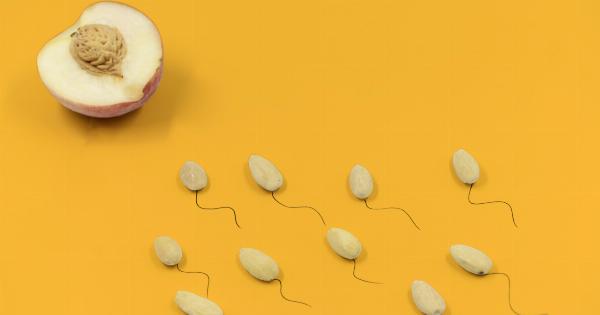In the realm of human reproduction, both male and female fertility play crucial roles in the creation of new life. While female fertility has often been the focus of discussions and research, male fertility also deserves attention and understanding.
In this article, we will explore the various aspects of male fertility and how it influences the process of reproduction.
The Basics of Male Fertility
Male fertility refers to a man’s ability to impregnate a woman and father a child. It relies on the production of healthy, motile sperm cells.
Sperm cells are created in the testes, stored in the epididymis, and then released during ejaculation through the penis.
On average, a healthy man produces millions of sperm cells every day. However, not all of these sperm cells are capable of fertilizing an egg.
Factors such as sperm count, sperm motility (ability to move), and sperm morphology (shape and size) all impact male fertility.
The Importance of Sperm Count
Sperm count refers to the number of sperm cells present in a given sample. A high sperm count is essential for increasing the chances of fertilization. A low sperm count, also known as oligospermia, can make it difficult to achieve pregnancy.
It is generally recommended to have at least 15 million sperm cells per milliliter of semen for optimal fertility.
There are several factors that can contribute to a low sperm count, including hormonal imbalances, genetic factors, environmental factors (such as exposure to certain chemicals or toxins), and lifestyle choices (such as smoking, excessive alcohol consumption, or drug use).
Sperm Motility and its Significance
Sperm motility refers to the ability of sperm cells to move effectively towards the egg. It is a crucial factor in determining whether fertilization can occur.
Sperm cells with poor motility may struggle to reach the egg, significantly reducing the chances of successful fertilization.
Various factors can influence sperm motility. One of the primary factors is the shape and structure of the sperm cells. Abnormalities in sperm morphology can hinder their movement and reduce motility.
Infections, hormonal imbalances, and certain medications can also affect sperm motility.
Sperm Morphology and Fertility
Sperm morphology refers to the size and shape of sperm cells. It plays a vital role in male fertility as sperm cells with abnormal morphology may be unable to penetrate or fertilize the egg.
In a healthy sample, at least 4% of sperm cells should have normal morphology.
Several factors can contribute to abnormalities in sperm morphology, including genetic disorders, hormonal imbalances, testicular overheating (due to tight underwear or excessive use of hot tubs/saunas), exposure to toxic substances, and certain medications.
Factors Affecting Male Fertility
Male fertility can be influenced by various factors, some of which are modifiable and can be improved. These include:.
1. Age:
As men age, the quality and quantity of sperm cells tend to decrease, leading to reduced fertility.
2. Lifestyle Factors:
Smoking, excessive alcohol consumption, drug use, poor diet, and sedentary lifestyle can all negatively impact male fertility. Maintaining a healthy lifestyle can improve fertility.
3. Environmental Factors:
Prolonged exposure to certain chemicals, toxins, pesticides, and radiation can harm sperm production and decrease fertility.
4. Weight and BMI:
Both obesity and being underweight can affect reproductive hormone levels and decrease fertility. Maintaining a healthy weight is essential for optimal fertility.
5. Chronic Health Conditions:
Conditions such as diabetes, hypertension, and hormonal disorders can impair male fertility. Proper management and treatment of these conditions can help improve fertility.
6. Medications and Medical Treatments:
Certain medications, such as anabolic steroids, chemotherapy drugs, and some antifungal medications, can adversely affect sperm production and fertility. Discussing alternatives with a physician may be necessary.
Diagnosing Male Infertility
If a couple is struggling to conceive, it is important to assess both male and female fertility. Several tests can help diagnose male infertility:.
1. Semen Analysis:
A semen analysis examines various parameters, including sperm count, motility, morphology, and overall semen quality.
2. Hormone Testing:
Measuring hormone levels, including testosterone, luteinizing hormone (LH), and follicle-stimulating hormone (FSH), can provide insights into any hormonal imbalances affecting fertility.
3. Genetic Testing:
Genetic tests can identify any chromosomal abnormalities or genetic conditions that may affect sperm production or quality.
4. Imaging tests:
Ultrasound or other imaging tests may be used to visualize the reproductive organs and identify any structural or anatomical abnormalities.
Treatment Options for Male Infertility
Depending on the underlying cause of male infertility, various treatment options may be available:.
1. Lifestyle Modifications:
Adopting healthy lifestyle habits, such as quitting smoking, reducing alcohol consumption, maintaining a balanced diet, and exercising regularly, can significantly improve fertility.
2. Medications:
Medications may be prescribed to address hormonal imbalances or underlying medical conditions contributing to infertility.
3. Assisted Reproductive Techniques (ART):
ART procedures, such as intrauterine insemination (IUI) or in vitro fertilization (IVF), can help overcome fertility challenges by directly depositing sperm into the female reproductive tract or fertilizing eggs outside the body.
4. Surgery:
In cases where structural abnormalities, such as blockages, varicoceles (enlarged veins in the scrotum), or scarring, are affecting fertility, surgical interventions may be necessary.
The Role of Male Fertility in Reproduction
While it is important to understand female fertility, acknowledging the significance of male fertility is equally essential. Without healthy sperm cells, fertilization cannot occur, making male fertility the key to reproduction.
By increasing awareness and addressing the factors that impact male fertility, couples can improve their chances of conception and the creation of new life.





























